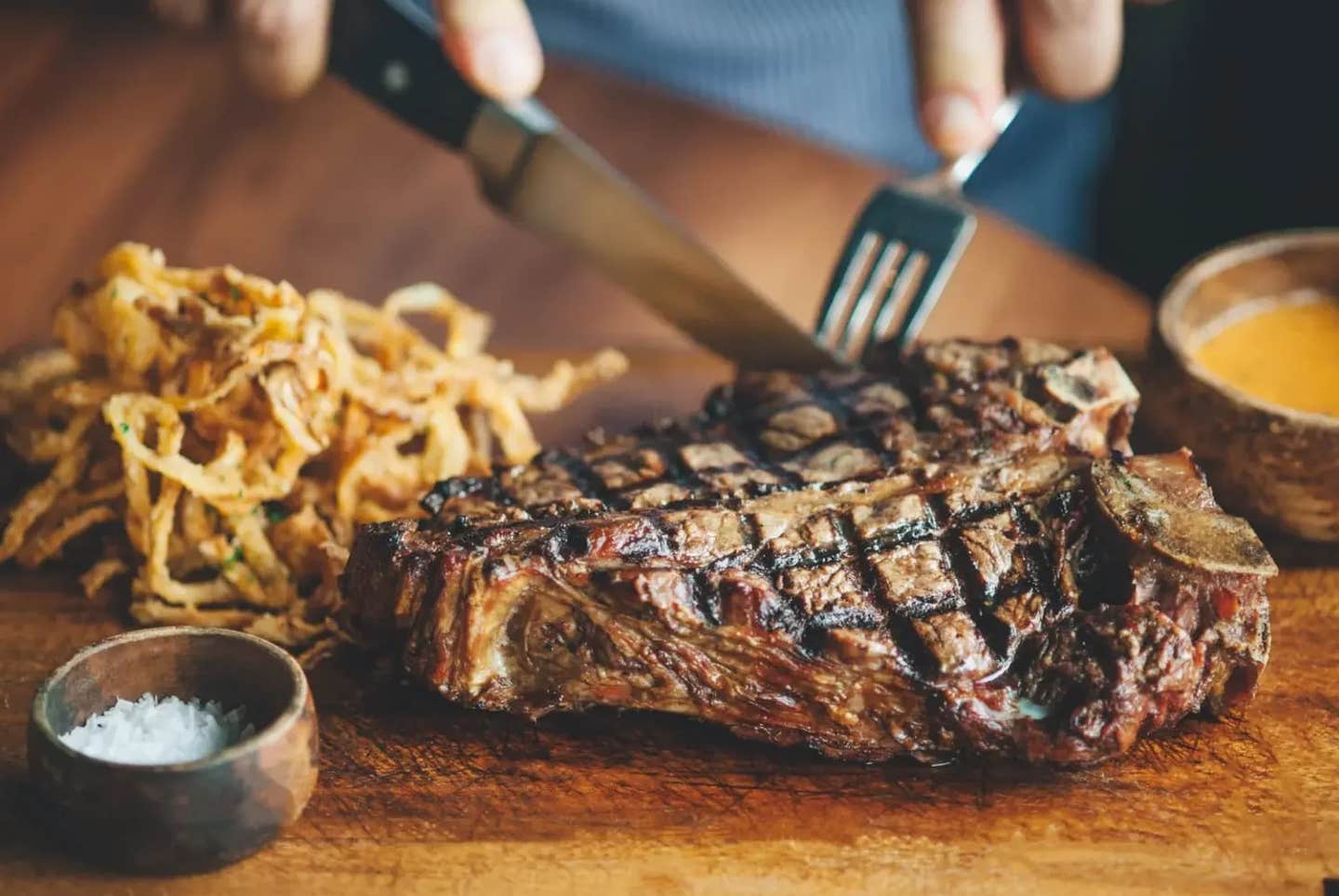This simple diet change can add decades to life expectancy, study finds
Researchers have discovered that significantly reducing intake of the essential amino acid isoleucine may slow aging and extend lifespan.

Scientists have discovered that reducing intake of the essential amino acid isoleucine can significantly delay aging and extend lifespan. (CREDIT: CC BY-SA 4.0)
A new study in Cell Metabolism has found that cutting back on a single amino acid—isoleucine—can slow aging and help mice live longer. This surprising finding has caught the attention of scientists, raising hopes that similar dietary tweaks could one day boost human health and longevity.
Isoleucine, a type of branched-chain amino acid, helps the body build proteins. But there's a catch—it can't be made internally. Instead, it comes from foods like eggs, meat, dairy, and soy. While essential, too much of it might do more harm than good, especially over time.
Past studies had already hinted at a link between isoleucine and body weight. Data collected from a 2016–2017 health survey in Wisconsin showed that people with higher BMIs tended to eat more isoleucine. That clue led researchers to take a closer look at how this amino acid affects the aging process.
“Different components of your diet have value and impact beyond their function as a calorie,” said Dudley Lamming, a metabolism expert from the University of Wisconsin who is involved in both studies. “We've been digging in on one component that many people may be eating too much of.”
One of the most exciting findings is that reducing isoleucine doesn’t just add years to life—it also improves “healthspan,” or the number of years lived in good health. Even older mice benefitted when the change was made later in life. That offers real hope for aging humans looking for new ways to stay healthier, longer.
To test their theory, scientists used mice with diverse genetic backgrounds and divided them into three groups. One group followed a standard diet with all 20 amino acids. The second had their intake of all amino acids reduced by two-thirds. The third group had only isoleucine reduced by the same amount.
All mice were free to eat as much as they wanted, but only from their assigned diets. Despite eating freely, those with less isoleucine aged more slowly and showed better markers of health. That suggests it wasn’t about calories—it was about the specific nutrients consumed.
The study opens the door to new ways of thinking about nutrition and aging. With further research, scientists hope to see if cutting back on isoleucine can safely help humans live not just longer, but better.
Related Stories
Remarkably, restricting dietary isoleucine led to a host of positive effects on the mice's health and longevity. It increased their lifespan, improved their overall healthspan, reduced frailty, and promoted leanness and glycemic control.
Male mice experienced a remarkable 33 percent increase in lifespan compared to their counterparts whose isoleucine intake was not restricted, while female mice enjoyed a 7 percent increase.
These mice exhibited significant improvements across 26 health measures, including enhanced muscle strength, endurance, better blood sugar control, improved tail function, and reduced hair loss. Notably, male mice in the low isoleucine group demonstrated less age-related prostate enlargement and a reduced likelihood of developing cancerous tumors—a common occurrence in diverse mouse strains.
An unexpected twist in the study was that the mice with restricted isoleucine consumption actually consumed more calories than their counterparts. Despite the increased caloric intake, they managed to burn more energy and maintain leaner body weights, even though their physical activity levels remained unchanged.
The implications of this research extend beyond the world of mice, raising the tantalizing prospect of similar anti-aging effects in humans. However, as with all studies involving mice, there are significant challenges to overcome before translating these findings into practical human applications.
Diet is a complex chemical reaction within the body, and it is likely that other dietary components play crucial roles in achieving the observed results.
General protein restriction, for instance, has been shown to have detrimental effects on both mice and humans. Therefore, applying these findings to the real world is more intricate than merely reducing the consumption of high-protein foods, despite its simplicity in limiting isoleucine intake.
The researchers highlight that the amino acid restriction level remained constant in all experiments. They acknowledge that further fine-tuning may be necessary to optimize the effects across different strains of mice and genders, emphasizing that when it comes to diet, one size does not fit all.
Dudley Lamming underscores the complexity of the issue, stating, "We can't just switch everyone to a low-isoleucine diet." However, he remains hopeful, suggesting that isolating the benefits to a single amino acid brings us one step closer to understanding the underlying biological processes and the potential development of interventions for humans, such as isoleucine-blocking drugs.
10 common foods that contain significant amounts of isoleucine:
Chicken: Chicken is a rich source of isoleucine, with one cooked chicken breast containing about 2.7 grams of isoleucine.
Beef: Beef is another good source of isoleucine, with one cooked beef steak containing about 2.4 grams of isoleucine.
Pork: Pork is also a good source of isoleucine, with one cooked pork chop containing about 2.2 grams of isoleucine.
Fish: Fish such as salmon, tuna, and cod are good sources of isoleucine. One cooked salmon fillet contains about 2.3 grams of isoleucine, one cooked tuna steak contains about 2.1 grams of isoleucine, and one cooked cod fillet contains about 1.8 grams of isoleucine.
Eggs: Eggs are a good source of isoleucine, with one large egg containing about 1.4 grams of isoleucine.
Dairy: Dairy products such as milk, cheese, and yogurt are good sources of isoleucine. One cup of milk contains about 1.2 grams of isoleucine, one ounce of cheese contains about 1.0 gram of isoleucine, and one cup of yogurt contains about 0.8 grams of isoleucine.
Legumes: Legumes such as beans, lentils, and peas are good sources of isoleucine. One cup of cooked beans contains about 1.5 grams of isoleucine, one cup of cooked lentils contains about 1.3 grams of isoleucine, and one cup of cooked peas contains about 1.1 grams of isoleucine.
Nuts and seeds: Nuts and seeds are good sources of isoleucine. One ounce of almonds contains about 1.4 grams of isoleucine, one ounce of sunflower seeds contains about 1.2 grams of isoleucine, and one ounce of peanuts contains about 0.9 grams of isoleucine.
Whole grains: Whole grains are good sources of isoleucine. One slice of whole-wheat bread contains about 0.5 grams of isoleucine, one cup of cooked oats contains about 0.4 grams of isoleucine, and one cup of cooked brown rice contains about 0.3 grams of isoleucine.
Avocados: Avocados are a good source of isoleucine, with one avocado containing about 0.6 grams of isoleucine.
The groundbreaking findings have opened up new avenues for research into aging and longevity. While the road to applying these discoveries to humans may be challenging and uncertain, the prospect of enhancing healthspan and extending lifespan through dietary interventions has never seemed closer to realization.
As scientists continue to unravel the mysteries of aging, the promise of a longer, healthier life remains a tantalizing possibility on the horizon.
Note: Materials provided above by The Brighter Side of News. Content may be edited for style and length.
Like these kind of feel good stories? Get The Brighter Side of News' newsletter.



